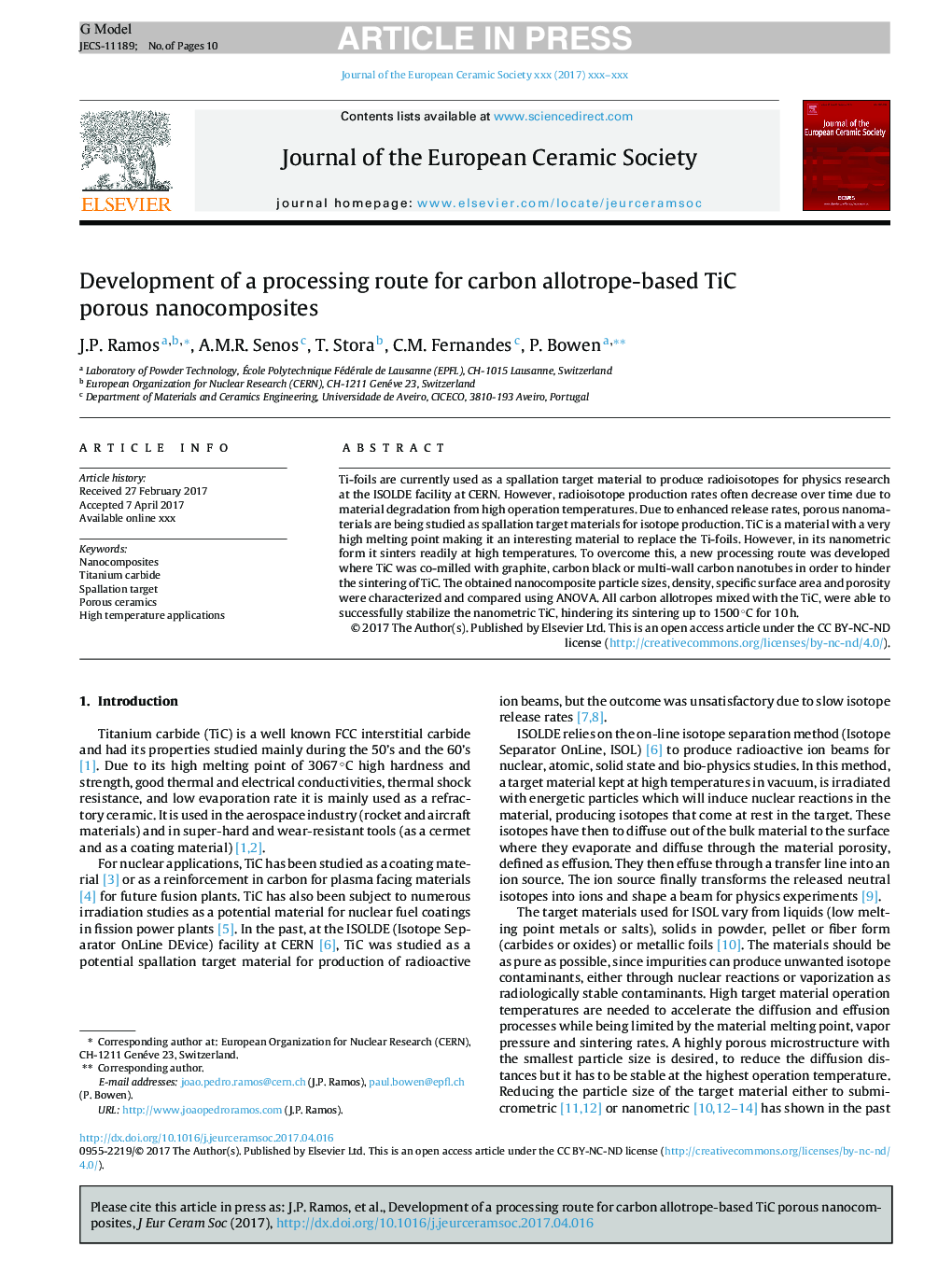| Article ID | Journal | Published Year | Pages | File Type |
|---|---|---|---|---|
| 5440423 | Journal of the European Ceramic Society | 2017 | 10 Pages |
Abstract
Ti-foils are currently used as a spallation target material to produce radioisotopes for physics research at the ISOLDE facility at CERN. However, radioisotope production rates often decrease over time due to material degradation from high operation temperatures. Due to enhanced release rates, porous nanomaterials are being studied as spallation target materials for isotope production. TiC is a material with a very high melting point making it an interesting material to replace the Ti-foils. However, in its nanometric form it sinters readily at high temperatures. To overcome this, a new processing route was developed where TiC was co-milled with graphite, carbon black or multi-wall carbon nanotubes in order to hinder the sintering of TiC. The obtained nanocomposite particle sizes, density, specific surface area and porosity were characterized and compared using ANOVA. All carbon allotropes mixed with the TiC, were able to successfully stabilize the nanometric TiC, hindering its sintering up to 1500 °C for 10 h.
Keywords
Related Topics
Physical Sciences and Engineering
Materials Science
Ceramics and Composites
Authors
J.P. Ramos, A.M.R. Senos, T. Stora, C.M. Fernandes, P. Bowen,
